After nearly a year of usage, I’ve got a pretty good handle on the Cannondale SmartSense system. The idea with the SmartSense platform is that a bike can be equipped with cycling rearview radar, lights (front and back), speed sensors, and even a power mount for your bike GPS/computer, all run from a single detachable USB-C battery – and all configurable via a single app. Beyond that the lights just turn on the moment you start moving, and at the end of the ride your rides automatically save and upload to the app and various platforms like Strava. It’s super clever.
Cannondale first rolled this out on the Synapse road bike series about a year ago, and has since expanded it to their Topstone gravel bikes. As with most fancy gadgets, this isn’t available on every model, though it’s also not just the most expensive $10K bikes either.
Now as usual for this site, I’m not really going to focus on things like lateral stiffness or other bike-specific review things. Instead, this is all about the electronics platform of SmartSense and how all these components work. In my case, I was testing it inside the frame of the $9,500 Synapse 1 RLE, but functionally all these components work just the same in the far cheaper bike models. It’s all the other fancy stuff on the bike that makes it expensive, not the SmartSense components. Also, this is/was a loaner bike that they’ll be picking back up shortly.
With that – let’s get into it!
The Hardware:
To begin with the obvious, this requires a Cannondale bike. Specifically, the Synapse (road) and Topstone (gravel) lineups today. What’s interesting though is that not all pieces are available on all bikes. The idea though is that you can glance at a bike name and see which parts it has. Here, look at this (small portion) of the Synapse lineup. These three models have three different levels of stuff:
Each bike you’ll see has an assigned suffix made up of three letters:
R = Radar
L = Lights
E = Electronic shifting
[No letters = nothing burger]
So as we see in the above screenshot from their site, the:
Synapse Carbon 2 RLE: Has Radar, Lights, and Electronic shifting
Synapse Carbon 3 L: Has just Lights
Synapse Carbon 4: Ain’t got nothing fancy
Pretty straightforward, right?
In this case, the bike I tested is the Cannondale Synapse 1 RLE, with Shimano Dura-Ace Di2 R9250, though oddly not a power meter at that $9,050 price point. On the bright side, given how bad the Shimano R9200 power meter is accuracy-wise, that’s probably not a loss. This review isn’t about the bike itself, but here’s the full spec page if you want it.
Now, let’s talk hardware. In this case, the electronic shifting element, while called out in the naming, really isn’t part of the SmartSense platform. So a bike has to have either RLE or L to be part of this club. And the first portion of the club is the so-called ‘Cradle’. That’s this piece here in the frame of the bike that the battery will snap into:
The cradle is effectively the brains of the operation. It controls the lights, the radar, houses the battery, and all the smarts. In fact, unlike a ‘normal’ Garmin Varia radar where the communications bits are in the unit at the back, here, they are in the cradle. The same goes for the battery, there is no second/extra battery at the back (or front) – everything depends on this singular battery that snaps in:
There’s a locking mechanism on the side, and then four LED’s on it. The battery has bi-directional USB-C charging, so it can either be charged, or charge other things (like a phone) if you wanted. It’s 2665mAh. Cannondale says the goal is to also sell bikes without the cradle but allow for upgrades later. In this case, it’s just a small tools compartment instead. You can buy all the pieces individually on their site already.
Now heading to the back of the bike, the cradle connects to the radar. This is a Garmin Varia radar, but in an entirely different form factor. As noted, there is no battery back here, nor any ANT+/BLE communications. That’s all internal to the cradle. Again, one battery and communications point to rule them all. In the below picture, the radar is the oblong black section with the word ‘Garmin’ on it.
The radar functions identically to any other Garmin radar, as it’s still Garmin internals inside. You can see the radar portion along the bottom, and then the red light bar wrapping around the top.
This 85-lumen rear tail light is actually made by Lezyne, not Garmin. To which you’re probably like: “Why didn’t Cannondale just use Garmin for the lights too?”. The answer is a blend of technical and demonstration. A small portion of the decision was the specific light specs that they wanted, but the far bigger portion is that Cannondale said they purposefully selected multiple vendors to both force everyone into an interoperable system, and demonstrate to future expansion vendors that it’s not just a one-vendor-trick pony. Further, Cannondale says that by having that consolidation of all the ‘brains’ and communications into the cradle, it means they can continue adding features down the road – rather than depending on the vendors to do so.
There is also an accelerometer in that rear radar, which lets the system trigger deceleration warnings to drivers (blinking the lights).
Next, sliding up to the front of the bike, you’ve got the 350-lumen front light. This too is made by Lezyne. It also has a small ambient light sensor on the back, so it can detect when you’re going through a tunnel and increase the lights on the entire system automatically. This is configurable using the app (which is seamless as part of the cradle).
The one downside though is as of now, there are no ANT+ lighting controls here. There is for the radar, but not the lights. Practically speaking though, this didn’t really matter to me. First, there’s a simple button on the back of the front light to adjust settings in real-time if I wanted to, and second, because the bike lights turn on the moment the wheels start rolling, I never really had a need to manually turn them on. Nonetheless, Cannondale says they aren’t against adding it, and may see it in a firmware update down the road.
But it’s on the back of the front light that things get really interesting. At first you’ll notice the wired connection running out of it to the central battery. However, there are also two ports on the right and left sides. These two ports allow expansion down the road, and since release a year ago, we’ve already seen the first of such expansions.
Last summer when Garmin announced the Garmin Edge Explore 2, they also announced the new power mount for it. Garmin previously has a battery pack setup, but this new mount allowed continuous power from an external source. In this case, the Cannondale’s existing mount is compatible with it, but you need the components from the $100 Garmin Power Mount Kit (some small plastic bits, plus the charging puck portion). Luckily though, the default cable type in the power mount kit is for Cannondale, allowing it to plug into the spare port on the front light. Albeit the cabling system isn’t proprietary to Cannondale though, it’s the same one used on plenty of other e-bikes out there from Higo (this is true for the entire SmartSense cabling).
In fact, the few extra plastic bits in the box were also adapters allowing it to thread up through the included Cannondale out-front mount, providing constant power to your Garmin Edge device.
This is compatible with not just the Garmin Edge Explorer 2 (bundled power mount units), but also a slew of Garmin Edge units over the years that have had power support. This includes the Garmin Edge 530, Edge 830, Edge 1030, Edge 1030 Plus, and Edge 1040. You can see here the power icon in the upper left shown as plugged in, while concurrently it shows it connecting to the Varia radar on the bike as I spun the front wheel to wake it up.
Finally, the last piece of the puzzle is the smallest but arguably one of the most important – the front wheel sensor. This sensor is a rebranded Garmin Speed Sensor V2, and is in charge of waking up the rest of the system when the wheel spins. After about two revolutions it wakes up the cradle and battery pack, which in turn wakes up the bike lights and radar.
However, it also records the distance and time of all your rides. This is a feature of the Garmin Speed Sensor V2, and Cannondale puts it to use here by syncing all this data to the app. Which is a great segue to the next section.
The App:
The Cannondale app isn’t required for day-to-day usage, but, is required for configuring and customizing settings. Essentially, the app has three core areas:
A) Historical listing of every ride you do automatically (uses the wheel sensor)
B) Bike/light/radar/battery/everything settings (and can store multiple bikes)
C) Ability to record a ride on the phone
Starting on the first tab, you’ve got your historical ride data. This data automatically populates from the wheel sensor. Remember, the wheel sensor isn’t tied to the main battery, so even if you have a battery-less ride, the wheel sensor still does its thing (on a coin cell battery).
One minor caveat here is that if you were to accidentally pair this to a Garmin app or head unit, that has the potential (depending on settings) to nullify your rides in the Cannondale app. This is because the sensor is actually a rebranded/tweaked Garmin Speed Sensor V2, which allows cached memory. But to Garmin’s apps/devices, it just looks like a Garmin sensor – so, it tries to download that cache. I had this problem a few times over the last year as I tested new Garmin devices and it’d try to pair to it (if I accidentally didn’t say no). The best solution is honestly to let the Garmin device pair to the sensor, and then set it to be disabled on your Garmin device. Meanwhile, for the phone said, just say no on the Garmin app. But really, don’t overthink it, you’ll be fine (I’m just including this tidbit in case someone is having an issue down the road, here’s the easy fix).
The rides automatically sync after activating the front wheel again post-ride. Meaning, after you finish a ride it won’t instantly show up, as it doesn’t really know that your ride is done (versus stopping at a light). You can check out the total details from the ride, as well as add photos, rename, etc…
You can also connect to Strava, Garmin, and Apple Health if you want more detailed information, pulling it into the Cannondale app. The sync is bidirectional for both Strava & Apple Health, but one-way for Garmin Connect (from Garmin)
Let’s head onto the good stuff though – the settings portion. This is under the ‘Garage’ tab, where ostensibly you’ve bought multiple expensive Cannondale bikes. At the top, you can tap each one of those green icons to get more data. As noted, some of my totals are short a lot of data due to the zapping I mentioned earlier from last spring/summer (also, trainer rides don’t show up here because the front wheel doesn’t move).
The concept is cool though, you’ve got maintenance schedules to remind you to go get things serviced. There’s an exact listing of the parts in your bike, as well as a link to the manual, quick self doable maintenance items, and more. Again, none of this by itself is earth-shattering, but given it’s right at the top of the same place you’d adjust your bike settings, it’s easy to find/remember.
But ultimately, it’s the bottom of this tab where all the goods are, this section here:
The first section is both the entire system, but mainly focused on the battery. It shows your current battery status, various cradle firmware/system versions, as well as whether low power mode engages automatically, and whether auto wake happens (versus just manually pressing the button).
Next, you’ve got light settings, both front and rear lights. Within this, there are four light mode saved settings, which you can iterate through using the button on the back of the front light (accessible while riding). There are also general settings that apply across all modes, which you can see below. In my case, I turned off both “Brake Alert” and “React to Radar Target”, mainly because here in the Netherlands, blinking lights are mostly frowned upon. Further, with so much of what I ride being road-adjacent-but-separate bike paths, it’d be constantly triggering for every car that went by, which is kinda annoying to the other cyclists on the path – as it flashes BOTH front and rear lights.
I also disabled the auto-adjust in low light, merely because I wanted to have the longest battery possible.
Within the light mode settings, you can tweak front and rear lights. This includes light patterns as well as brightness percentages. I’ve settled on about 30% brightness, though frankly I could go lower. I use always-on (no pulse), because again, flashing lights are frowned upon in much of Europe. But if flashing is your thing, it’ll actually demonstrate the pattern for you up top as an animation. Again, super clever.
Next, there’s the radar settings. These are pretty straightforward, I leave the Audio alert on, but they mostly pertain to the phone app rather than your bike computer, as all those settings happen via your bike computer. To your bike computer, this is just a standard issue Varia Radar.
Lastly, there are the wheel sensor settings. Remember, this is for the front wheel, so again, any trainer time won’t be accounted for here. Realistically, the only thing to change here would be if you changed the tires, given that otherwise the unit is built into the front wheel:
Beyond these core areas, the rest are basically just settings pages. There aren’t a ton of other things to tweak, but here are a few:
With that, let’s look at some day-to-day riding with it.
Riding with it:
Now as noted, this was a long-term review. Though frankly, it wasn’t exactly my intention for it to be. Like anything else, things kept sliding off my plate, and getting this review out the door was one of them that kept falling off the plate. So here we are a year later and I’ve put quite a bit more time on it than I expected – in all sorts of conditions in multiple countries around Europe. While the system was pretty solid last year when I first started with it, there were the numerous sync/cache issues that I noted in the previous section, as well as some battery high-burn bugs too. With all those gone, it’s been pretty smooth sailing since.
The ‘just works’ factor is exceptionally high. I only have to charge the single battery now, and I *KNOW* I’ll have bike lights and radar that work. No dealing with charging front lights and rear lights and radar, and the bike computer. Heck, I can take a virtually dead Garmin Edge device, toss it on the bike and go out and ride for hours and hours without a concern. It’s amazing.
On the Varia radar side of things, it performed identically to the standard Varia radar units. I ran them side-by-side for quite a while last spring, with both an RTL515 and RCT715, and two concurrent Edge units, and they triggered at the same time. I’m sure there are some edge cases where one might trip a split second before the other, but even those I suspect would be more about position (or dirt accumulation on the radar due to placement).
Sometime early last summer when they were troubleshooting some early high-burn lighting issues, Cannondale sent out a second/extra battery to have on-hand for longer rides. While they eventually sorted out the light issues in an app update, the extra battery would turn out to be one of the most useful accessories. Basically, it allowed me to have one bike on the battery, and one on standby charging. Thus, I’d always have a battery ready to roll for an impromptu evening/dark ride, or anything else.
But as I argued to them, the current battery also seems just a bit too small. Given all the extra weight on the bike (radar, rear lights, front lights, wiring), this bike isn’t meant for ‘save every gram’ racing. And the reality is, the vast majority of people don’t race. They just ride. Sure, you could detach most of it pretty easily if you wanted to, but most won’t. The point being though, that I wish they had a double-stack single battery option. Give me twice the battery capacity by increasing the height of the battery. I’m not riding this bike configuration to save a tiny bit of weight, I’m riding it for safety.
This is even more true because there’s no way to turn off the charging of your bike computer, short of pulling the cable. So yesterday, I went out for a 3.5hr ride, and the Cannondale battery was at 100%, while my Edge 1040 Solar was a 50%. Given the Edge 1040 Solar has 45 hours of battery life (+ solar time), there’s no reason for me to continue charging it on this ride. But it did, slowly but surely from 50% up to 86%. But in doing so, it wiped out a solid chunk of my Cannondale battery with it while I rode – going down to 25% (from 100%). This was with light settings for always-on at 30%, plus radar. Meaning I was on track for about 4.5ish hours with the recharging going on too.
Now, it turns out there’s actually some battery logic here already. Garmin says that when the battery is below 50%, it’ll draw battery at max current, whereas once it’s at 50% or higher, it’ll do so at a reduced rate. That means that in this case I’m somewhat lucky I didn’t go out with the Edge battery at 15% (still PLENTY for my 3.5hr ride), as I’d undoubtedly have lost lights/radar towards the end of the ride. Still, ideally, there would be some communication between the Garmin Edge and the cradle to more smartly manage this or let me manage this (without having to pull the connector cable).
In terms of overall battery life, Cannondale says that in a pulsing configuration, you should be able to get up to 12 hours of light+radar in the right battery configurations. They have a lot of different battery configurations, so it’s kinda all over the map. I’d say my real-world usage mostly on the 30% always-on power saving mode + radar puts it around 6-7 hours of battery life (if the Edge isn’t charging too).
Nonetheless, these are somewhat edge cases. One can just not use the power mount (which is extra anyway), and problem solved. And overall, I’m super happy with the day-to-day use aspects of the bike from a charging/usage perspective. It’s really nice not to have to worry about having charged bike computers. Well, except the Shimano shifting components. So let’s talk about that.
Evolving Forward:
(Above: The charging port for the Shimano Di2 shifting components)
I’ve tried numerous so-called smart bikes over the years. For example, I used the VanMoof smart bike for a year or so. And in many ways, each of these iterations has done something right, but stopped short of perfection.
The Synapse is much the same way. It’s really one of the first times we’ve seen strong smart integration across product company lines. Cannondale has partnered with Garmin for the radar portion, while literally wrapping it in a Lezyne light. All while being triggered by a Garmin Speed sensor. It’s geekily creative in its approach, but it’s cleanly done. The ‘just works’ factor is high, versus something cobbled together DIY style.
However, while these company boundaries are blurred – others are far more obvious. After all, there’s still another battery in the frame for Shimano Di2. This not only adds weight, but presents two things to charge. And that’s ignoring the fact that the power cable from the main lights/radar battery runs directly past/over the Di2 battery. Which begs the question: Why can’t the main battery charge the Di2 battery?
I’m not asking for Di2 to be consolidated (ok, maybe I would on a different day). I think there’s some validity in having your critical shifting system battery separate from your not-as-critical radar battery. However, why isn’t the Di2 battery piggybacking off the main Synapse battery? So each time I charge the main battery, it tops off the Di2 battery? The Di2 battery lasts far longer of course (usually months), so the topping off is just that – topping off.
Next, we get to the lack of ANT+ controls on the lights. They went to all the trouble to smartify this bike, and yet missed out on the only bike lighting control standard. One supported by Garmin, Hammerhead, Bontrager, See.Sense, Fly6, and others. Now certainly, as I noted above – it hasn’t been a big deal to me in daily usage, but I know for some, having that control on the handlebars is important.
The other challenge is about upgradeability. While some people do replace their bikes every few years, I’m certainly not one of them. My main road bike is 6 years old, and my triathlon bike far older. In this case, it’s a given that every 2-3 years Garmin comes out with a new radar version – such as last year with their RCT715 radar camera. We haven’t seen any variant of that for the Cannondale system yet, despite being a year later. That of course would require hardware engineering, to be able to have a removed battery, removed components, how do you handle offloading media with what is normally something you remove from the bike, etc… Maybe that’s minor, maybe it’s not. To Garmin’s credit, each time they’ve done so, the entire platform and mounting system has remained backwards compatible.
It’s been a year, but there haven’t been any extra accessories yet. If we were looking at Bontrager/Trek, we’d have some history (very long history) on how they handle connected lights/etc, but in Cannondale’s case, it’s all new. Which isn’t bad – in that time period Cannondale has added a second bike lineup (the gravel bike), and when I asked yesterday, they said that “we’ll also see other SmartSense ready products, and consumers will be able to purchase the system aftermarket if interested.”
Wrap-Up:
A lot of bikes meander through the DCR Cave each year, and have for many years. For the vast majority of these bikes I’m testing other smart components – things like power meters or electronic shifting. Sometimes there are some bike lights, and every once in a while some other connected element.
But this is the first time there’s a cohesive story between almost all of the components on the bike. Cannondale went to a lot of trouble to make this feel like one single integrated solution. To the average consumer, you’d have no idea that it was sourced from multiple vendors using existing tech. Everything comes across as native Cannondale (in a good way), yet they still preserved compatibility for the existing standards (the radar namely).
When you step back and think about it: Cannondale is triggering vehicle proximity notifications on the Lezyne’s non-smart front/back lights using Garmin’s Varia radar (also wrapped in Lezyne lighting), all of which is configured via Cannondale’s own smartphone app…completely seamlessly while still ensuring the Varia radar connectivity shows up on pretty much any modern bike computer – be it Garmin, Wahoo, Stages, Hammerhead or others.
About the only area where things get a little messy is that the speed sensor can pair into the existing Garmin Connect app, which can cause some ride-offloading confusion if you let it. But that’s a relatively minor nitpick in the grand scheme of things.
As noted above, I’d love to see them offer a double-stack battery option, and I’d love to see this offered on lower-priced bikes. As I look to potentially refresh both my road and triathlon bike in the coming months, I’d be very inclined to consider one of the SmartSense-enabled models at the right budget. Additionally, I’d like to see road variants with SRAM AXS on them. Currently, all the Synapse models have Shimano electronic shifting, and all the gravel models are SRAM electronic shifting. While it won’t likely matter for most people, given Shimano’s blocking of the Hammerhead Karoo shifting connectivity/data, it makes it difficult for me to test future bike computer shifting integrations if I’ve only got Di2 in my stable. But again, I recognize that’s not an issue for most people. At present, the least expensive bike to have the SmartSense system is the $3,325USD Synapse Carbon 3 L, equipped with mechanical Shimano 105. The most expensive is the Synapse Carbon 1 RLE, at $9,050USD.
Ultimately though, I’d love to see this trend continue, both for Cannondale, and other vendors as well. It’s by far the best integration I’ve seen to date.
With that, thanks for reading!
FOUND THIS POST USEFUL? SUPPORT THE SITE!
Hopefully, you found this post useful. The website is really a labor of love, so please consider becoming a DC RAINMAKER Supporter. This gets you an ad-free experience, and access to our (mostly) bi-monthly behind-the-scenes video series of “Shed Talkin’”.
Support DCRainMaker - Shop on Amazon
Otherwise, perhaps consider using the below link if shopping on Amazon. As an Amazon Associate, I earn from qualifying purchases. It doesn’t cost you anything extra, but your purchases help support this website a lot. It could simply be buying toilet paper, or this pizza oven we use and love.


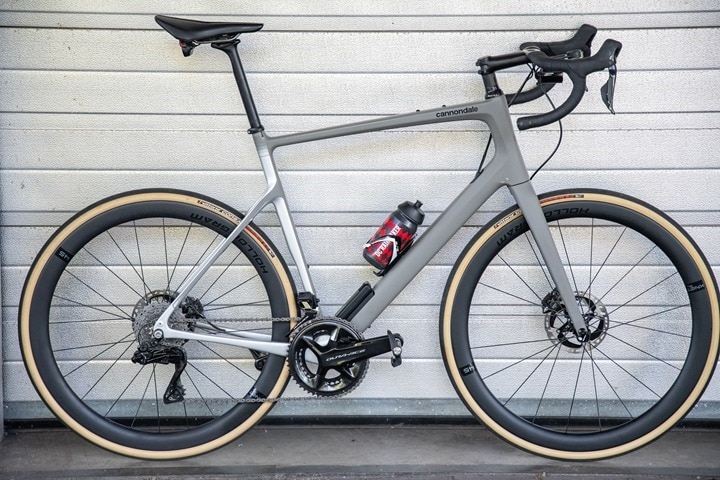

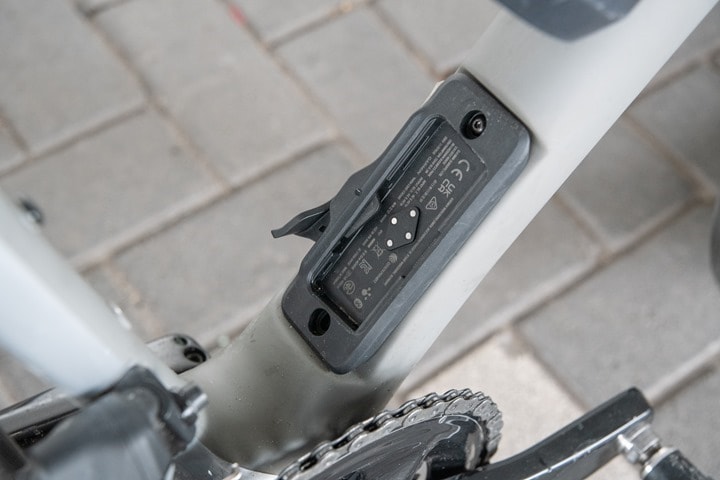

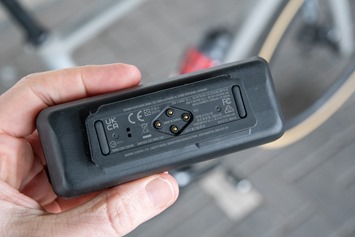
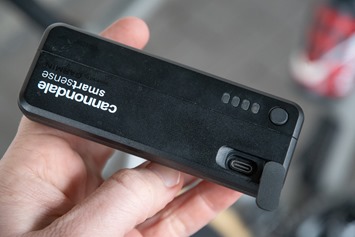

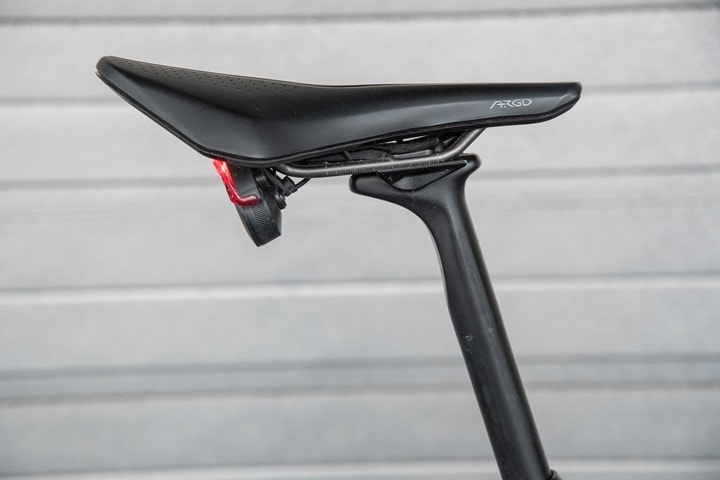
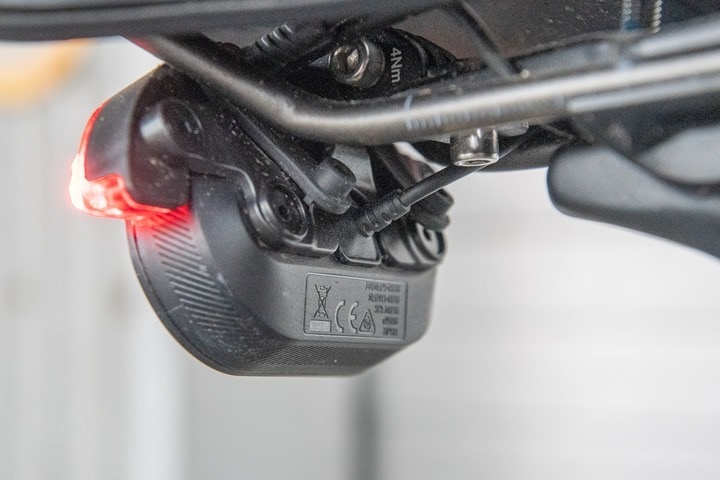
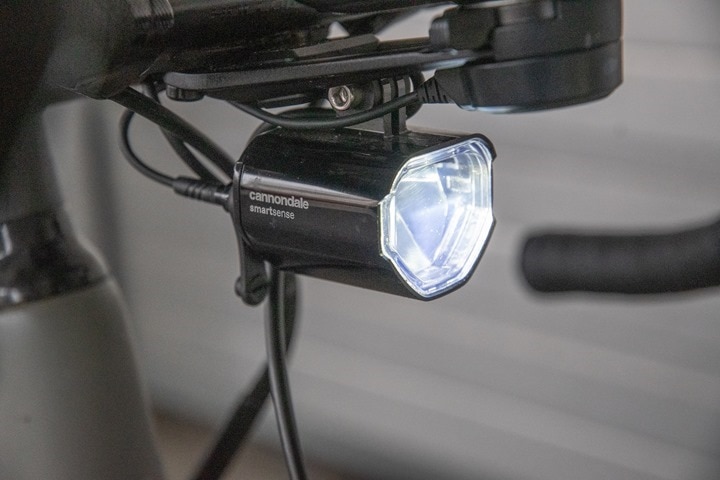
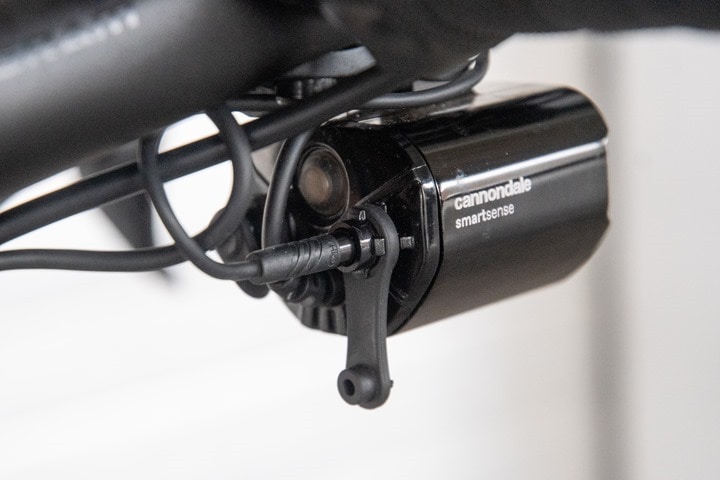
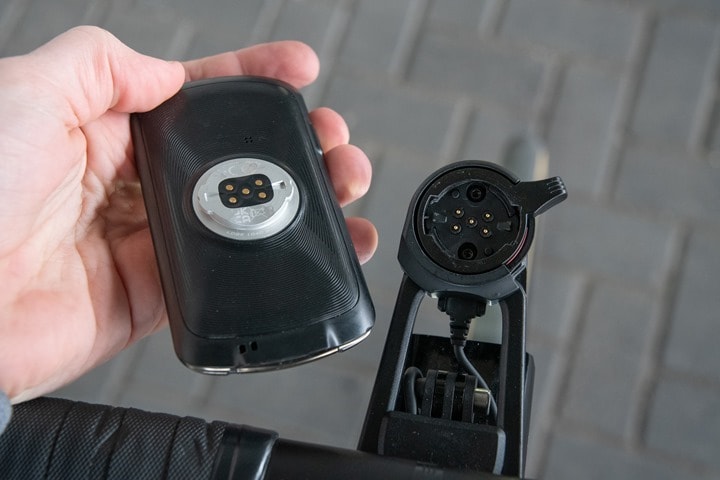
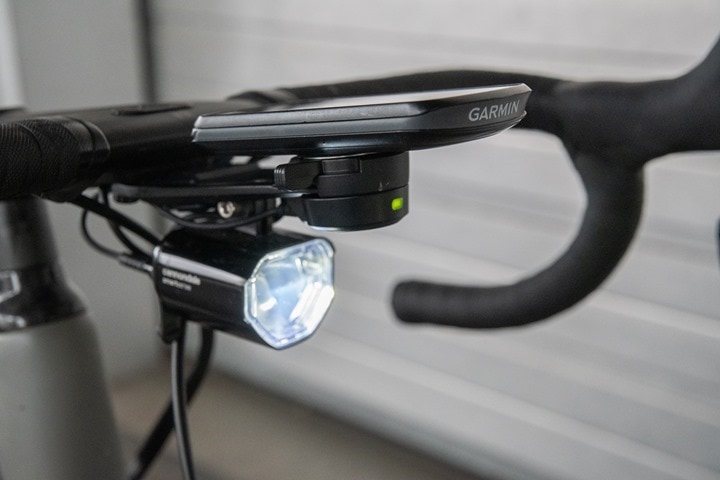
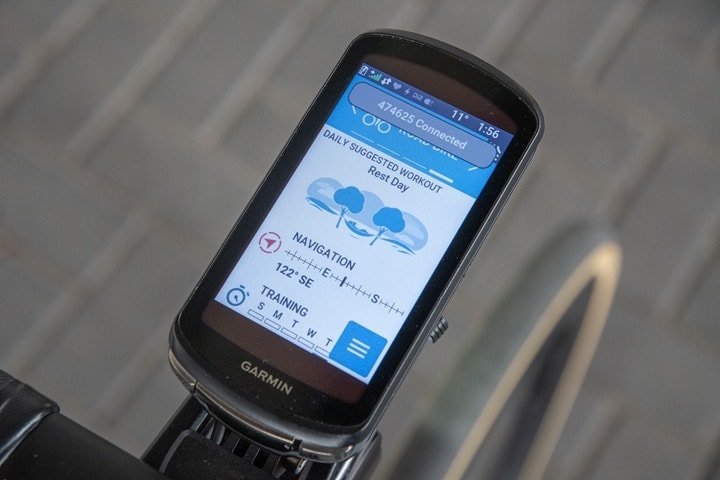

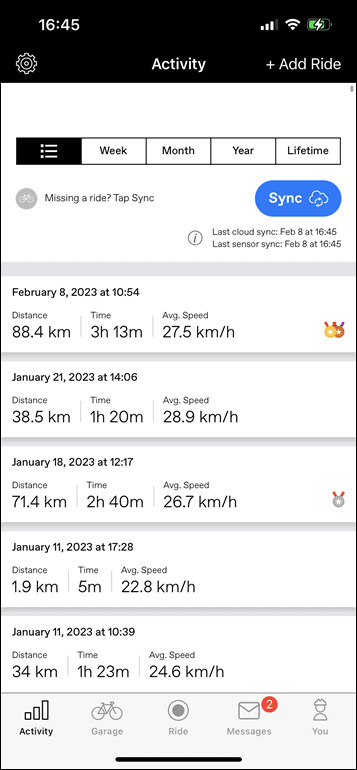
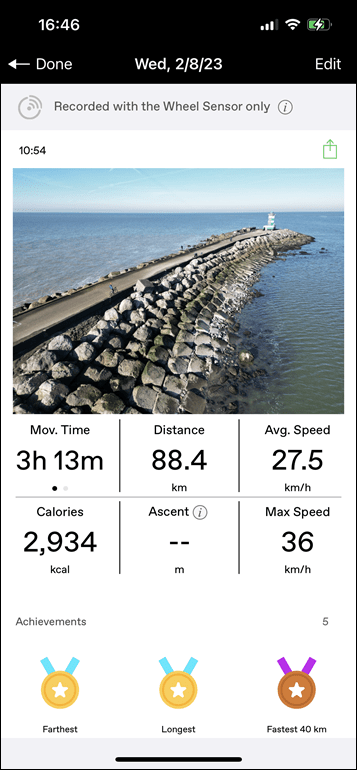

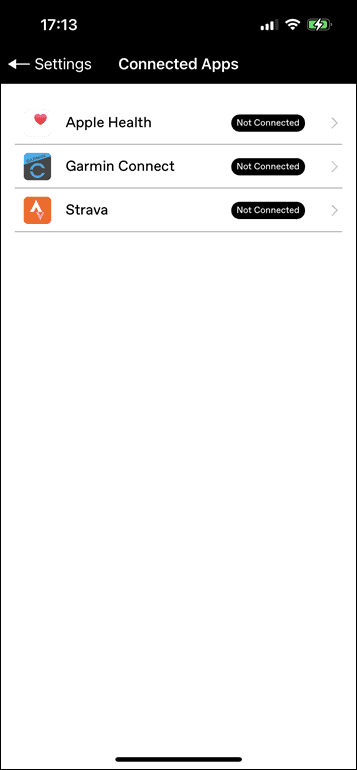
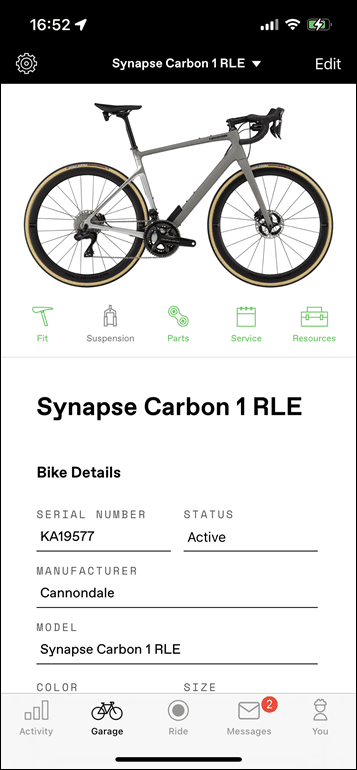
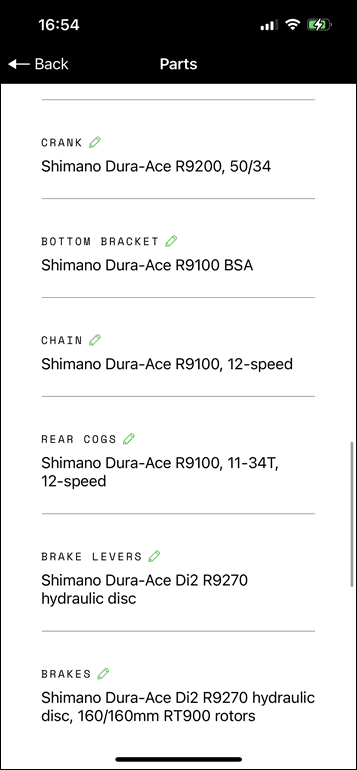
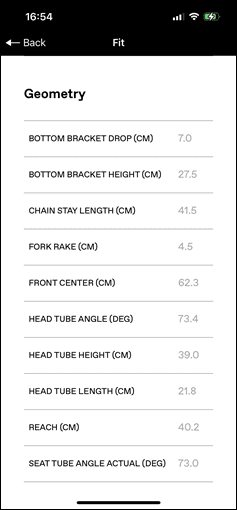
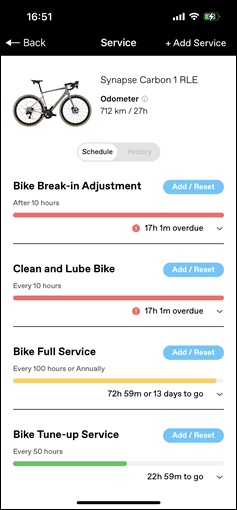

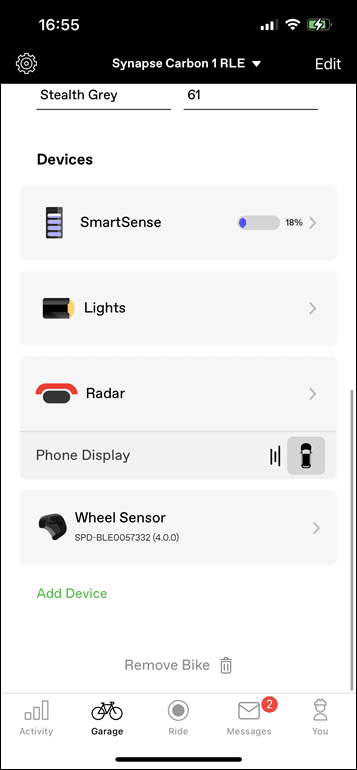
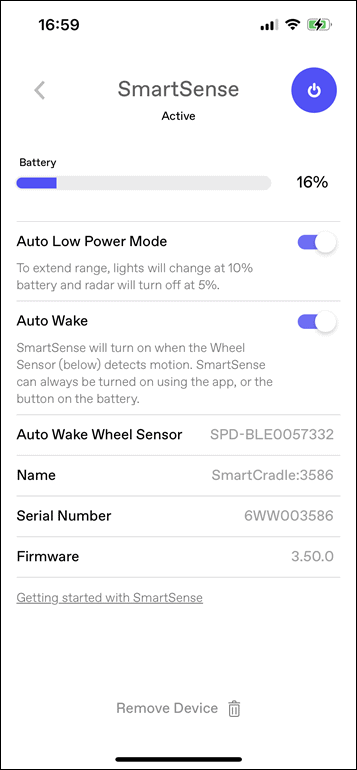
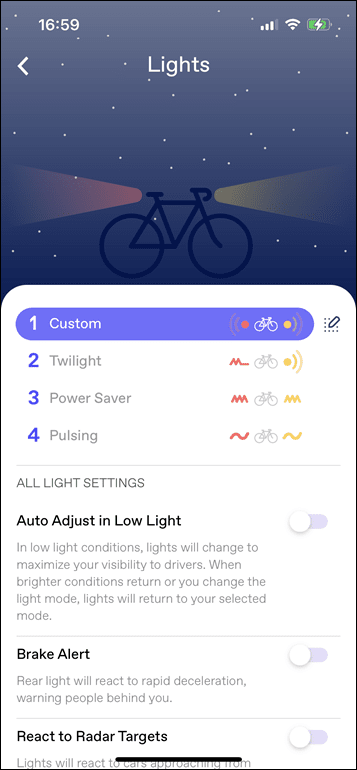

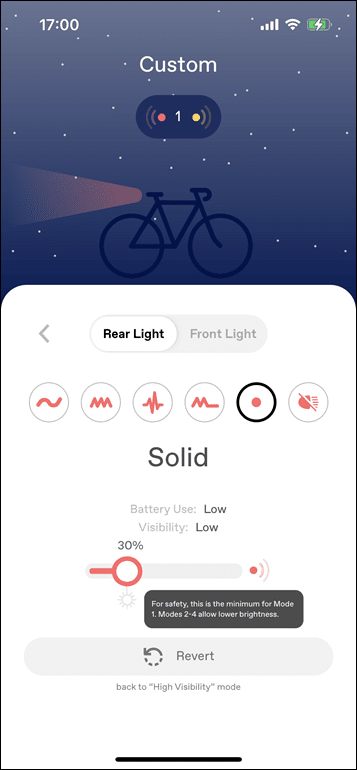
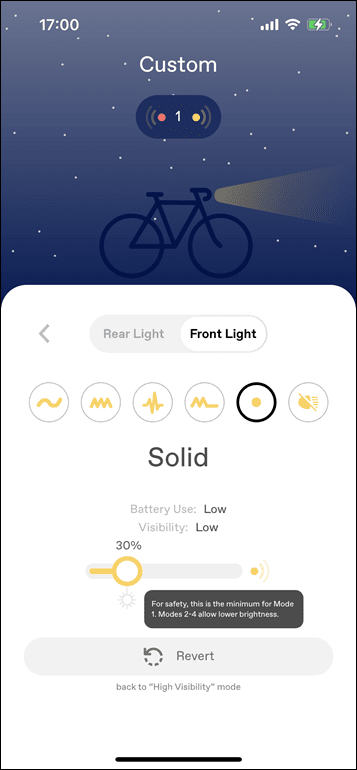
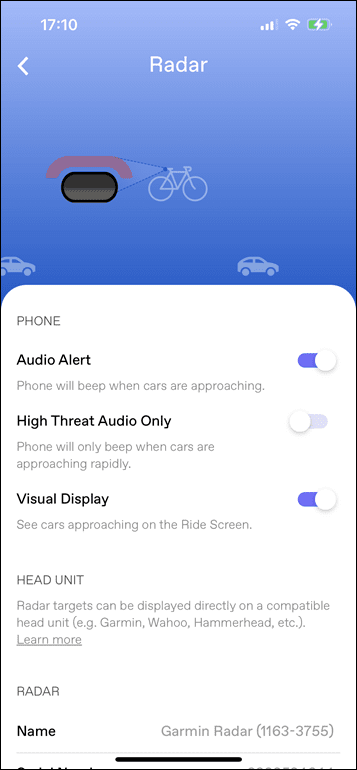
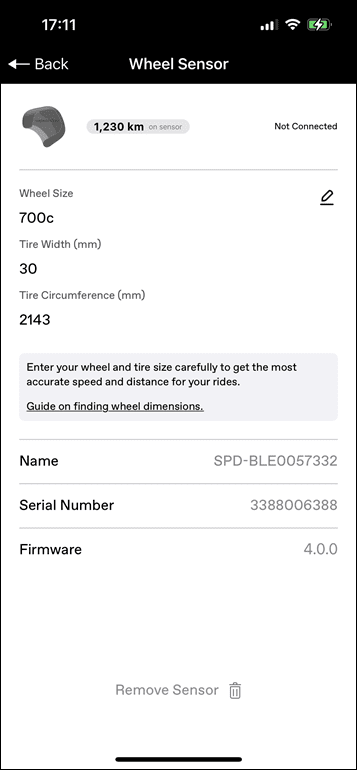
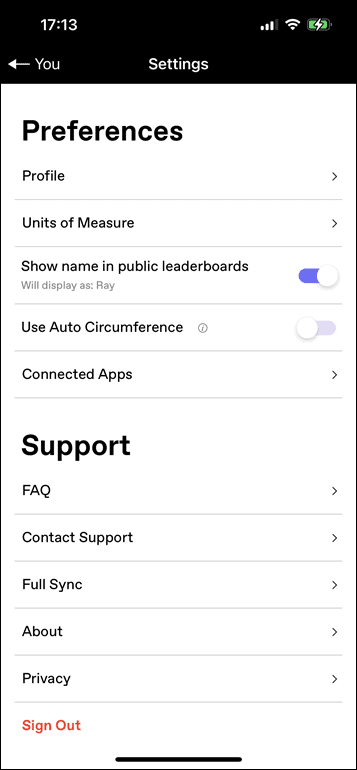
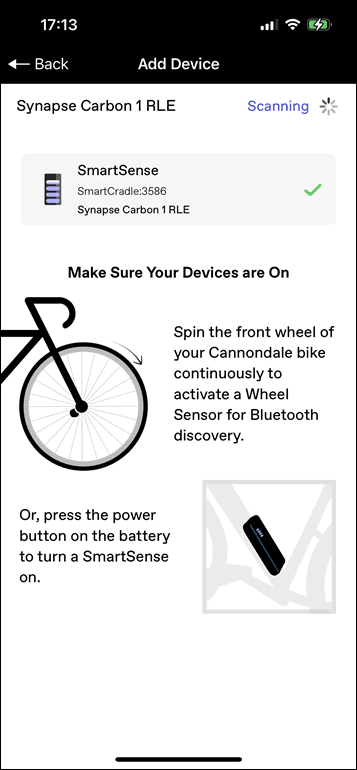
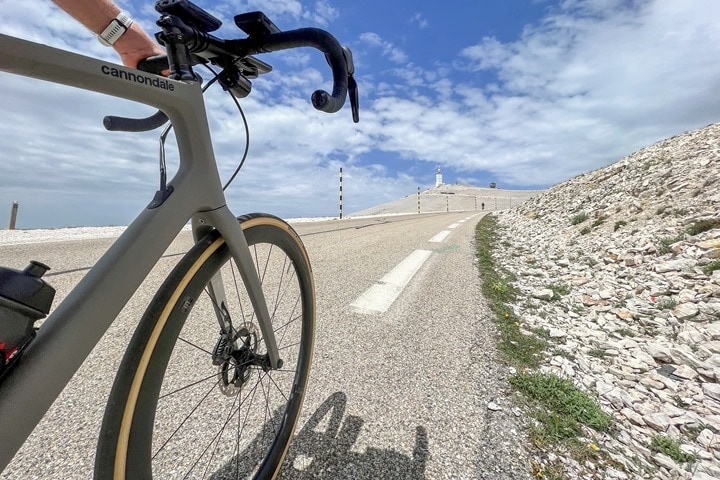
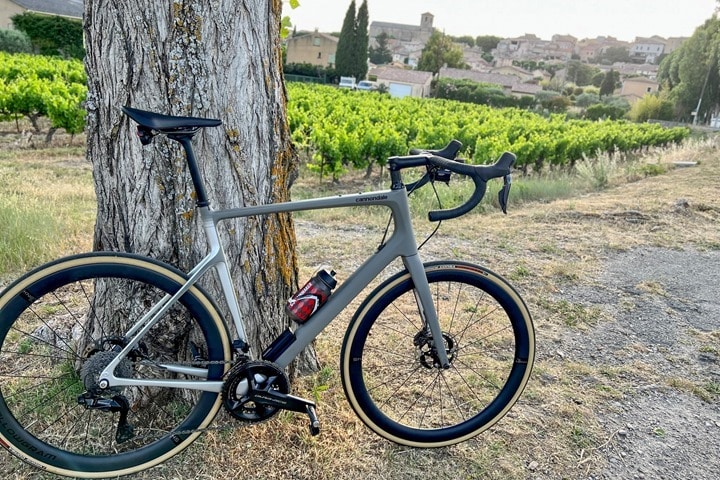
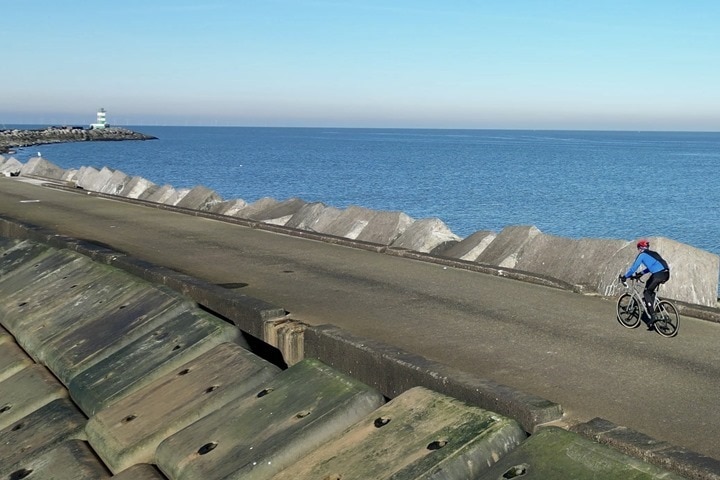
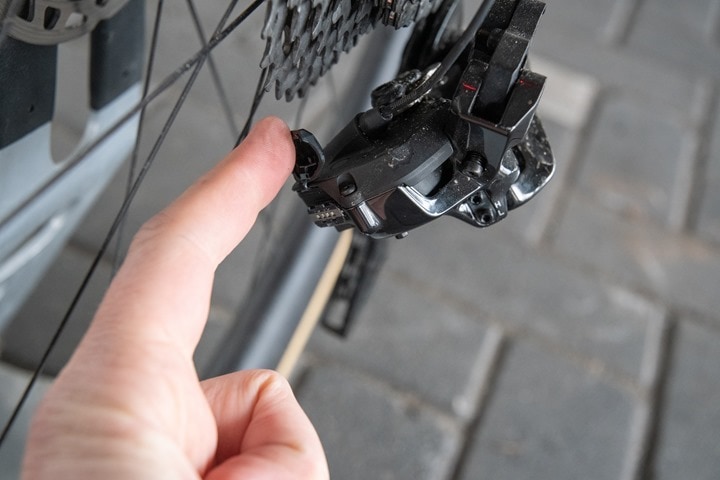
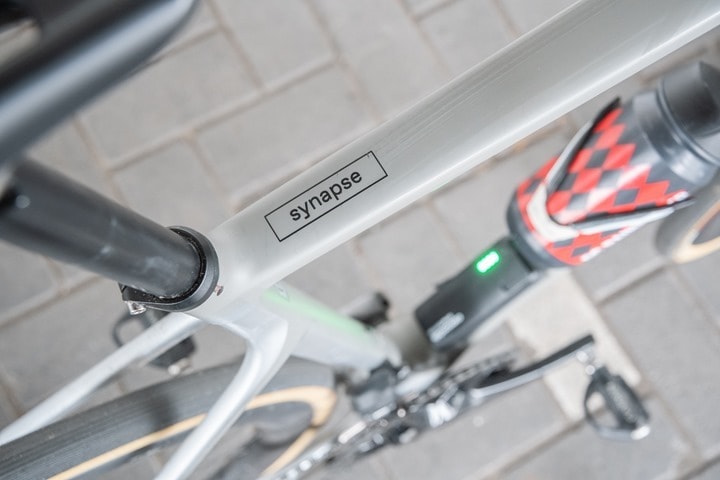
















The Synapse has been one of my favorite bikes for years but as long as they force me to pay more for a system I didn’t ask for and don’t want it’s off my purchase list. I find it incredibly arrogant of Cannondale to do this. I’ve owned Cannondales since the mid-80’s by the way.
As shown in the screenshot in the post, you can still buy a Synapse without this…
Agree 100%. I was on the verge of buying a Synapse as a winter bike (UK) given that it will take fenders etc. and the SmartSense stuff stopped me immediately. I’m now looking to pick up a secondhand previous model.
Yes but it’s the lowest-end model running 10-speed Sora isnt it?.
Where’s Emily Litella when you need her?
11-speed 105.
I guess I don’t understand though for the winter bike scenario – I mean, that’s literally the ideal scenario for wanting to have lights always-ready for likely darker and less visible riding.
Ultimately, it won’t be the bike for everyone, which, I suppose is why Cannondale still has a boatload of other fancy and non-fancy road frames without it.
Unless they’ve updated the range recently, I thought it was the Tiagra model that came without the attached brick and assorted cables and lights. For me, this is an expensive commuter bike and moves a long way from the World Tour race winning Synapse of yesteryear. As a 2014 Synapse owner looking for a new road bike, I was massively disappointed by this.
I perfectly understand that such a bike is not for everybody. It’s most probably not what most riders want. It’s actually not my cup of tea as well.
What I don’t get is that people get offended by the fact that a company decides to build such a bike (based on an existing bike, more or less “replacing it”, I get it). I mean, seriously, there are gazillion of bikes without such features… go get one. Maybe tell Cannondale that you would have loved it if they built higher end variants of the Synapse without it… but just accept the fact that those companies have to do business decisions and don’t build 100 variants of a bike.
That are old models. alle new bikes are only available with this integratie system
link to cannondale.com
Excellent review. I always appreciate your depth and perspective. I just happened to be looking into the Synapse this week, helping a friend research electronic shifting. After reading this, I think a Synapse X RLE would be perfect for them.
How many people here are buying tiagra or Claris bikes…
Thanks for finally finding time to write and publish this, Ray, I’ve been waiting for it for a while!
I have a question regarding stop lights: acceleration-based stoplights are a thing for a while already – why doesn’t Garmin (or any other bike computer manufacturer that supports ANT+ Light profile for that matter) add it to their computers and radars? Given the fact that the computer has the information on how fast the bike is decelerating anyway – it could trigger the breaking light on its own.
A solution looking for a problem I think, especially when it adds so much cabling to a bike, I thought we wanted to reduce cables! I mean, it’s kind of neat, how it’s implemented, but does this really improve my life? Not really, my regular charging needs for my bike are once or twice a week charges of my Varia Radar and ELEMNT, so twist those two off and plug them into a USB hub overnight. That’s it. Power meter works on a coin cell that lasts up to a year. Speed meter is hub based, also a coin cell. HR strap wouldn’t work with a system like this of course. Front light I probably charge once a year as it only gets used if on an evening ride when there’s a possibility I might loose daylight.
I agree with others that I actively wouldn’t buy a bike that with this system installed.
I really like the idea Cannondale went to work with but the execution is just plain ugly.
You have a battery that is a hump on the donwtube (just stick in the downtube, Trek and Speci have compartments under the bottle cages where the battery would fit just fine)
To many wires showing (in times were everyone wants completely hidden cables/wires)
The software part might be integrated, the hardware is just bolted on.
I already have a light setup that I like and that really works for me and IMHO is superior to what Cannondale put together here. Plus, that battery is so bulky and ugly that it detracts from an otherwise lovely bike.
If they sold a version at the Ultegra/Dura-Ace level that excluded all this garbage and converted the area of the frame reserved for the battery into a SWAT-like compartment (like Specialized) I’d be interested. Until then it’s a non-starter for me. It’s a real shame because I have a 2016 Synapse that I absolutely love and am thinking about replacing. I’d love to replace it with another Synapse since I’ve been so happy with my current rig. Instead I’ll probably end up with either a Roubaix or Domane.
Have you seen the size of that brick battery in real life (actually, I’ve only seen it in shops – I’ve never seen one of these out on the road). It would have to be a huge compartment!
Yes. It’s similar in size to the SWAT box (or whatever they call it) on my Diverge. It’s incredibly useful and if you pack it right you don’t even need to use a saddle bag.
Completely agree, I would have thought the ‘swat box’ idea would have been ideal for this. After so much thought has gone into the integration, the actual aesthetic implementation is terrible. I’m not a fan of e-bikes but some of the latest models can barely be told apart despite the hidden motors, if this is possible I can’t imagine why Cannondale couldn’t make a better job of hiding the battery and integrating the lights.
cool concept, ty for the detailed write up. Hopefully we will see more of this from others in the future.
I’d defititely echo your comment “why isn’t the Di2 battery piggybacking off the main Synapse battery? So each time I charge the main battery, it tops off the Di2 battery?”
perhaps, in a way, the whole setup sits more logically with the exterior SRAM derailleur batteries ie it can’t charge those.
Cool! It sure solves the need-to-charge-everything-up problem and the myriad of different charging cables. I suppose the entire industry will have to start thinking about something like CAN Bus for bike bits.
Re replacing bikes: I’m still riding a Merlin Extralight. :-) You won’t pry that out of my cold dead hands!
One typo: Meanwhile, for the phone *said*, just say no on the Garmin app. I think you mean “side”.
I’ll be more positive than most here, I am quite impressed by the neat integration of the elements in this setup, and would love not having to worry too much about the charging status of my bike computer.
I don’t currently have any lights on my road bike but it certainly zouke not harm in terms of safety.
I have a perfectly fine and recent road bike, and don’t find Cannondale’s quality/price ratio particularly interesting, so I am not too tempted to switch over to a smart Synapse.
But, as far as I can tell, nothing would prevent such a contraption to be designed to be fitted to any bike, apart perhaps from the less than aesthetic cabling requirements?
I can’t ride that thing, my friends would think I’m on e-bike!!
Very interested in seeing where this collaboration ends up going over time.
Having all of the regular Garmin bits and a slightly older Synapse means it will be a few years before I can justify playing around with it.
They have added a water bottle mount for the cradle and battery so in theory you can retrofit.
It isn’t perfect but an interesting start.
My view of my Cannondale Synapse 2 LRE after 9 months. The bike is brilliant, great performance, very comfortable riding position, gear changing ultra smoth, very responsive to terrain change great on hills, still love the bike.
What’s my problem? Smartsense, the cannondale APP and the battery performance. My experience so far, first ride out got all the electrics working linked to Garmin headset, loaded Cannondale app. Every thing connecting as it should and working great. First removed radar LED display as radar shows on Garmin head set, just clutters handle bars : However 2nd ride ( a normal club ride 4 hours) battery only lasted 3.5hrs, Radar closed down 10 minutes after lights turned off, the main safety feature you want is Radar to the end of your ride, lights should go off much sooner. This was a bright sunny day, in poorer visibility then battery charge would drain quicker. Upon return I set about getting the setup so it performed better i.e power saving . The issues with this are 2 fold, to reduce power usage satisfactory means turn off front light completly. but also if you remove the battery to charge it, from the cradle the unit goes back to default settings, even the app on the phone does not restore settings when it connects, what a waste of time and effort.
My 3rd ride was a 100 mile sportive group ride, an elapsed time event with basic feed stations on the route, no time to stop and play with settings or charge battery. My idea was to turn off front light and have it in manual mode, didn’t work, at events like these there is no time to play with app you want your preferred settings by default and not be worrying that the front light incoming on all the time, even pressing manual light switch off does not save much power. I had to keep turning lights off when activated because going into shaded sections it came back on, lasted 4 hours this clearly was not my idea of a full days riding.
My 4th ride a 4 hour club ride I decided to open up the cradle and disconnect the front light as in Mid summer day lights are not needed. I then removed front light completly. I completed the 4 hour ride with still 65% battery charge left, a much better outcome, however this did not suffice in winter and poor weather.
However I may well remove all smart sense devices and buy after market equipment., if I can get a suitable 3D printed blanking plate for the cradle, this is because my fellow riders complained about the brightnees of the rear light.
The cradle computer is a gimmick and not fit for purpose, it should interface to any head set as a sensor, it is under powered the head set does not know cradle status (phone is in back pocket) and I can’t see cradle status leds as view blocked by drink bottle when riding, Smartsense does not communicate with the Di2 so no status information. Smartsense does not retain programming / settings if battery is removed. Additionally the battery should be inside frame as it is not ascetically pleasing. Another issue is while the lights and radar go into sleep mode the cradle continues to operate using battery and flashes blue status light regularly using more power, so needs constant charging when bike not in use.
The Cannondale app is very basic and does not add value. it does not sync to Garmin connect or Strava, the control of smartsense devices is minimal and it does not link to Di2, so all in all not worth the effort I have removed it.
The integration with the garmin speed sensor, Radar and head set is easy and very useful. Connecting the Di2 to the head set is straight forward and comprehensive, being able to adjust sync modes, view battery charge level and change screen display by the hood top buttons is a great feature. It would be more advantageous if the smartsense status could be viewed and the lights be controlled by the head set. My overall view the Synapse bike is fantastic, but Smartsense, cannondale App and battery need a major overall.
I’d take issue with your comment “the main safety feature you want is Radar to the end of your ride, lights should go off much sooner”. In daylight, yes, maybe. But by design, at night? I’d say the rear light is the last thing you’d want to die.
Hi Martin-
Thanks for the comment. It sounds like you’ve had some time on the bike, but, I suspect that time was mostly a year ago?
Not wanting to go line by line, but virtually everything your comment has been fixed/addressed/tweaked since last spring. A few notables:
A) Settings not retaining if battery taken out: Definitely not the case. I take out the battery at least once a week, and charge them in rotation. Never once lost my settings – even when I left the bike dead a month or so.
B) Low battery life with lights: It’d be interesting to understand what exact light % values you were using. Certainly, if you use certain defaults – it’ll burn through battery like crazy. But I used very-visible but still only 30% intensity on front/back (always-on, no pulsing, radar), and simply aren’t seeing the lower numbers you saw. But as I noted in the review, last spring, I did see those numbers, mostly due to some bugs when it’d reset my light settings. They were resolved late-spring I think.
C) Controlling lights from headset: You can, you just tap the button on the back of the light. Super accessible while riding, and honestly easier than fidgeting with a Garmin Edge light control panel (as much as I’d like ANT+ light compliance, frankly, this works better real world).
D) App not uploading to Strava/etc: This was added back in December. Meanwhile, Garmin Connect sync has always been there if you wanted it via Speed Sensor (but with caveats noted above). Though honestly, I imagine most people riding this bike that have Garmin Connect also would record it on their GPS anyway.
E) Di2: I agree, I’d love to see better Di2 integration here. Cannondale was very polite when I talked to them about this, and did their best not to throw Shimano under the bus. But ultimately, this one is on Shimano (specifically the battery topping off). Rightfully or wrongly, they are very hesitant to have any Di2 wired integration. On the wireless side for Di2 info, they actually don’t offer BT integration yet, only private-ANT. Thus, Cannondale can’t do anything here either.
F) App not adding value: I’m actually surprised. I’m normally the guy that says most of these apps are stupid, but in this case, it’s actually incredibly well done. If you haven’t used it in a year, I’d give it another whirl, might be worthwhile.
G) Radar vs Light Dying: Again, this configurable in the settings, but totally agree with Neil (as do both Cannondale and Garmin), they want to preserve your rear light at all costs when battery gets dicey. That’s the thing that final thing keeps you alive on a dark road at night, not the radar. Now, if we’re talking daytime, then I could see wanting it differently. But again, you can do that too via the app.
Cheers!
I’ve just got a Synapse LTD, love the ride.
I’m getting about 2hrs runtime with lights and radar on. Even though I’m in the UK the bike is fitted with a STVZO rear light so I don’t appear to have any choices on light intensity/flashing etc.
Looks like I’m on the same firmware you (3.50.0). Currently think it’s a pretty poor set up, hopefully your better experience means there’s a magic fix for me somewhere.
Keep up the good work.
Hi, got the Synapse out of storage, not used it since November. Loaded latest version of Smartsense App checked everything was connected . Please note I am in UK.may have different lights than EU.
1)UK Version 4 app does NOT give options to control.power levels of lights just front & back on, front on only, back on only.
2) the lights turn off at 10% battery then the radar switches off at 5%. This is not configurable.
3) used the app to set front light to off (it switched off). However removed battery for charging when connected to bike again light came straight on at wake up. Yes can switch off on light but I want light off then switch on if needed.
4)agree can now sync with Strava.
No idea why different in UK but I gave it another go. I have removed front light and will buy after sales light and removed Smartsense App, will use Garmin head set for ride details and control.
I don’t know why those settings aren’t configurable in your app, I’ll check with Cannondale.
1 – For the light level though, are you using pulse/blink, or always-on like me?
2 – And then for your front-light off custom arrangement, any chance that’s not set as the #1 light config? I believe when you start up each time, it defaults to the #1 light config in the list.
Hi pdj. All bikes made for the UK came with the STVZO lights on which is a shame as it really does hold back the full SmartSense experience. You can get the International standard lights now in the UK as spare parts and they really extend the life of the system and give you much more control over the light modes. Part numbers are CP1662U10OS (front light £69.99 rrp) and CP1672U10OS (rear light £44.99 rrp). Thanks
I have replaced the bloody StZVO lights for the standard ones as you have suggested. However I still do not get the standard four adjustable lights operating modes in the app nor by the front light button. I have even reinstalled the app fresh on a different iPhone. Still I just get the three StZVO modes in the app.
Do you know how to solve this? Thank you.
I totally agree. I bought the LTD RLE version last year and came with the same European version lights so no blinky mode. Was getting 2 hours in total out of the battery. Have since removed Smart Sense completely and replaced with my own lights and radar. CannondaleSpares actually sell the official blanking plate for the battery cradle.
Have you found a solution for this? I’m also playing with the idea of replacing the “StZVO” Lights with the Non StZVO? Thanks in advance.
Yes, I have found a solution for this. After you install both standard lights you have to factory reset the whole SmartSense system so it reconfigures itself including the app for the different lights hw versions.
The factory reset function is undocumented and it is hidden in the Cannondale App. It can be activated by long tapping (10 sec) SmartSense heading in Garage-SmartSense screen (iOS). If the reset was successful than “Auto Wake Wheel Sensor” shows “–” instead of the paired sensor id afterwards.
Good luck!
Thank you, Johan, I’ll try.
Hi! What does it look like underneath the battery mount plate (inside the down tube)?
Is there a lot of room where I could put a multitool and a tube?
I like Cannondale bikes, and this Synapse system is cool, but I worry that it will be outdated in a few years. The old batteries will be big and clunky. The radar and lights will be outdated.
I already have a Garmin radar/camera, and already have 2 Outbound Lighting headlights. Sure, I’d LOVE to have integrated lights, but not if it’s proprietary, and if the headlight is limited to 350 lumens.
I need run 2 headlights at night in order to be able to see well enough due to my eyesight. Before I got my current lights, I had 2 NiteRiders that were around 1200lumens on high, and I ran them at Medium brightness (both lights at once.) A single 350 lumen light won’t be enough for me, so I would automatically need at least another headlight mounted. That starts to get cluttered, especially with the extra cables this Synapse system has.
I’d like to get one of these bikes without the “RLE” but not if they force me to the lowest-end Tiagra groupset. (Which is what it shows on their U.S. website as of now (August, 2023)
Overall, it’s cool, but I keep bikes a long time. My oldest Cannondale is nearly 30 years old. I can’t imagine keeping all this Synapse gear on my bike for 30 more years. Heck, in 5 years it will probably be outdated, and I’ll be looking for a battery blanking plate anyways.
Thanks!
Would like to see a Cycliq or some other video source included into an integrated solution.
Intrigued, but looking at the sizes I guess my 40cm CAAD4 needs to last forever.
A quick, probably dumb, question but how do you attach a saddle bag with the rear light / radar taking all the room under the saddle rails?
I have a large bag which hangs more vertical, straps fit as normal to the saddle but then attaches below the seat post bolt. Can email picture if wanted
Thanks. No need for the photo
This is an easy fix, the lights are mounted using go pro style mounts on both front and back so buy some go pre extensions, I got a pack of 6 of these on Amazon for less than £10. You can put an extension on the back to make the light and radar sit farther back so you can get a saddle bag in there. There is also a nice bonus that the saddle bag sitting behind the radar and light means it keeps the bag nice and clean and I actually love the way it sits. Just play around with the go pro extension mounts to get the right length for your bag. You can also drop the front light lower the exact same way with these mounts if you wanted to maybe mount something on the bars.
Reading the comments, I think some people don’t understand the use case.
I commute to work by bike. Every day I have to make sure my headlight, my radar, my garmin all are charged. So I am constantly taking lights off and on.
It would be awesome if when I got to work I just had to unplug a battery and take it to my office rather than 3 devices.
Just my take.
What you said makes perfect sense, but why then did Cannondale start SmartSense with its highest end endurance road bike, and now a high end gravel bike? You’d think they’d start with one of their commuter bikes. I ride a Synapse from 2020 (far down the line from this one, Shimano 105 with mechanical shifting) and also a 2019 Topstone. If I had to commute again, I probably wouldn’t choose the Synapse to do it. Most days I ride the Synapse, it’s with my Varia 510 and my Edge 830 only so SmartSense wouldn’t make sense for me. And as someone else has pointed out, where do you put a seat bag?
How long is your commute that you have to charge every day? Synapse isn’t exactly a commuter is it?
dynamo hub does all that and more :)
Hi Paul S, the new alloy Topstone and upcoming alloy Synapse are SmartSense compatible (as is the new SuperSix EVO) by way of a small hole in the downtime for cabling and a bottle cage that can also house the cradle and battery. It was designed that most future Cannondale models could accommodate Smart Sense. As for saddle and bar bags, the light interface connection is the same as GoPro so any Go Pro extender can relocate the lights in a number of directions. At the front you can drop the light down below a bar bag and at the back you can extend it back and above a big saddle bag. Hope this helps.
So it’ll eventually come down the line to bikes that people would actually use as commuters? That’s great.
As for me, I keep seeing the single point of failure. If that battery fails for some reason, I lose my lights and radar? A decade ago I had to ride frequently in the dark, and I always mounted two of everything, just in case, in addition to passive reflectors. (Only the main headlight had a rechargeable, though, the rest all used replaceable.) The Real Bob points out the convenience of the single battery, but for me, it’s “what if it fails?”
Yes you can fit it on much lower end bikes now if needed.
You make a valid point, all technology has pros and cons. The battery and cradle is made by Garmin and they do have a pretty good reputation for quality so hopefully that will stand up to the job. Some riders have a second battery or a back up rear light on their helmet/bag/seatpost, all viable options.
Is this a potential post-market install on a 2022 Topstone Alloy 1? It’s not clear from the manual.
Great point. I always have at least 2 of everything (well, at least with lights.) It is a chore to charge them all the time, but that’s a tradeoff vs. a single battery powering a relatively weak headlight (The Synapse is 350w headlight so far, right)?
I love the idea of this integration and hope it continues to develop and not only with Cannondale but other brands. For me, I have somewhat avoided electronic shifting for two reasons being the battery charging and potential obsolescence of an electronic groupset. It’s annoying to charge a heart rate monitor, radar, light, helmet, headphones, head unit, and power meter. That’s if I’m not using varia vision. You also have to make sure your phone is charged as the varia app and music take it’s toll during a ride. That’s eight and maybe nine devices that have to have a charge when I ride. Combining four or more of these items with one battery is brilliant. Again, however, I would worry about obsolescence as I’ve upgraded lights and radars at least once in the last few years. Changing out your Garmin watch every 3 years because of a dead battery is one thing, but is Cannondale going to support this in 10 years? If they don’t sell enough of them, what is their incentive in 10 years to continue to support them with batteries, etc.? Sure, there are some riders changing bikes every few years. But, by and large, many of the foks I ride with are on bikes that are 10 to 20 years old. I still have a road bike purchased used in 1991 in the stable. Doesn’t get much use but nothing on it that can’t be repaired or replaced easily. I watched a youtube video last night featuring one of the most recognizable riders in Southern Florida, a true icon in road riding in that area. His dress kit was new and topnotch. To my dismay, he was riding a Cannondale he purchased in 2002 and had no intentions of upgrading and he was riding with the fastest group rides in the area. I ride with lights as I have had a couple close calls and hope they help in the future. But, all this tech can also be a bit stifling to the real reason we are out there. Just my two cents.
I’ve had the bike for several months now. Unfortunately not ridden as much as I should have. My “initial” impressions are really good. I like integrating the lights and radar right into the bike. Thanks for tips on the app too, much appreciated. As with all newer technology and integration of multiple devices there is improvement that could be done, but that will come with time too.
One note about the wheel sensor. If it’s the same design as the wheel sensor they put on Supersix Evos in 2019, it works fine, but has one major issue. The battery can’t be replaced without removing the disc rotor. This might only happen every couple years, but when it does, it could require a trip to the bike shop if you don’t have a torque wrench that goes up to 40Nm. (It’s also another battery in the system unconnected to the new central battery.)
<>
modern batteries have computers in them so it is perfectly reasonable to get rid of the separate shifting battery. The single main battery simply needs to cut off non-essential devices.
Quick comment about See.Sense — while they profess ANT+ support, they haven’t enabled it on their new ICON3 line, and removed it from earlier models. I asked them about this and their reply was: “We didn’t advertise ANT+ as a feature with ICON3 as we’ve had countless issues with it in the past and dropped support as a result. There is a potential for adding ANT+ support in the future if ANT+ works to fix the functionality, but I don’t believe this is likely in the near future unfortunately.”
Weird.
I’d be curious to know what the specific issues were. The lighting profile is one of the more complex ones out there to implement, partially because the consumer UI side of it can be somewhat complex too. That said, other companies seem to figure it out no problem…
really don’t understand going for such a small capacity for something that’s supposed to power multiple items on the bike. lots of headlights alone have more capacity than that, and looking at the battery pack, would it need to be much bigger to fit a couple of 21700s in there? that would essentially quadruple the capacity.
When i first saw this bike last fall at my LBS, I was pleastantly surprised, Cannondale definitely deserves Kudos for the amount of effort to integrate everything into the bike, making it so that you can just grab the bike and go. I’m sure you can relate to this, but at home, next to my bikes i have a 10-port USB charger for both me and my wife’s bikes, 2 front lights, 2 varias, 2 garmin edge, 2 AXS battery chargers.
That’s eight! things to charge just to go on a road ride, if i had electronic shifting that would make it 10 things to charge. it takes me some time everytime we start/finish the ride to remove all the things from both bikes, to the point where it’s annoying.
To be able to just grab two battery packs, put them on the bike and go. Game changer.
I agree completely.. except: I already HAVE Garmin radar/cameras for several bikes at home (me and kids’)
I also already have some pretty nice headlights (Outbound Lighting) that have a nice, crisp cut-off and multiple power settings. I’d love for it to be integrated, but this Synapse system comes with a single 350w head light.
That might be enough to BE SEEN, but I have not ridden with a single 350 watt headlight in at least 10 years — That’s just not enough light for me to see the road ahead on dark nights. Maybe if I were 20 years younger, my eyes could handle that.
They need integration while allowing easy upgrades, including the battery to a larger capacity.
What if you put the wheel speed sensor on the rear wheel? It would capture trainer rides but might get confused to think you’re not moving despite wheel turning.
I have one of these on hold. Question- do I have to use the provided OEM rims/wheels? Can I upgrade or change them in the future? I had a feeling that smart sense had a sensor in the wheel hub.
The sensor is a Garmin rebranded, it hangs on the spokes, so can be transfered to any wheels. It is wireless so will connect to any headset, and wakes as soon as you start moving.
Thank you Ray, for the detailed and, as always, excellent review of this special product. The Synapse LTD RLE is my 5th Cannondale bike, especially for autumn and winter.
For the German readers here: Most – or actually all – of the functions for saving battery power cannot be used on the STVO protected roads here in Germany. Dim headlights: No, Dim taillights or turn on only when traffic is detected: No, Blinking: No. Switch off lights and only run radar: No. And so you end up with the battery, which costs 300 euros, for a whopping 2 hours runtime, in words: two. Of course you can buy a second battery for 300 EUR or take an Amazon rear light with you for 5 EUR, a difficult decision. The battery cannot be charged during operation either, you read that correctly: As soon as an external USB-C battery is connected, the entire lighting system shuts down.
And so you quickly end up with a second or third battery for 300 EUR, a rogue who thinks something about it…
But honestly: The STVO as an “excuse” that this has to be the case in Germany? Every bicycle dealer sells any cheap lighting without STVO approval and there is really no way that I can do without the STVO approval in the app and use some of the power-saving functions instead?
And while I’m lucky not to need more than 2 hours to the office and back, I confirm the “Sensor Error 0:FC” every 60-90 seconds on the Garmin EDGE 1030, which causes the radar to crash and restart, especially on cold days.
Of course I could ask Garmin about it, I did: “It’s Cannondale hardware, please ask them for help”.
I could also ask Cannondale, I did: “Unfortunately we have so many inquiries, please contact the dealer. And: This is an automatic answer.” – 2 further inquiries remained without success.
I could also ask the dealer, which is what I did: “Yes, you can leave the bike there and we’ll look for it, but it will take time, we have no experience with the system and unfortunately we don’t have any spare parts either.”
I really like the bike and the idea of the integrated light too.
It’s also okay for me to try new things and I understand that sometimes things don’t work out in version 1.0.
Announcing a product in the „Apple sphere“ and leaving the customer without any support immediately after purchase is simply annoying. Every day anew when I click away the message “Sensor error 0:FC” a good 50 times in the 2 hours with one battery….
But in between, I drive well protected and conform to the German Road Traffic Regulations. ;-)
Spring is coming soon, then I can get back to the SuperSix EVO… with the old and not at all STVO-compliant radar…
The reply I got from Cannondale for the same question
Morning, I would double check the wires are plugged in , if this is still happening then please get the bike back to a Cannondale dealer.
Answer I got from Garmin for the same question.
0:9 is a “Radar Interference” error message. It’s when there is 24GHz noise present, causing artifacts on the radar signal that could make vehicle detection unreliable.
We suggest that we recommend avoiding large metal structures (like train tracks, metal-frame bridges or power sub-stations – these can cause an increase of radar signals bouncing back to the device, which could cause an error like this one), as well as areas with elevated RF noise
The app does not allow to switch off lights. You can only choose between front, rear or both which is sad.
However pressing and holding the button on the front light a few seconds swiches off both light and radar keeps working in my case.
I started riding a new Carbon 2 RLE last Thursday. I bought the bike for the frame and Ultegra groupset but so far the integrated lights and radar are a overall plus for me.
I just saw your article today. It was quite helpful in gaining a fuller understanding of the Smartsense tech, so thanks so much for writing this in-depth review.
I have one question which I hope you or someone here can answer. I am planning to use two wheelsets with the bike. I’d like to leave the Cannondale speed sensor on the OEM wheelset and have another sensor on the second pair for convenience. My goal is to have Smartsense continue to “just work” whenever I swap wheelsets. Can I just slap on a Garmin Speed Sensor v2 and pair it with the cradle or do I need to buy another Cannondale rebranded sensor?
I’ve had a SmartSense equipped Synapse for about a year now and absolutely love it. The “just works” factor is huge for me – only having to worry about 1 battery for lights makes it simple to get out and go. I keep everything on high-vis and auto modes, and easily get 5+ hours out of the battery. Personally I think the app is handy but I don’t use it all the time, just spin the front wheel and the lights are on – park the bike and they shut off. Easy.
I do like the idea of larger capacity battery option. I bought a second battery to have on hand for 7+ hour rides, but one large one is a good idea.
For anyone worried about storage, I am able to use seat and handlebar bags from almsthre (https://almsthre.com) without interfering with the lights/radar.
Would 100% buy another SmartSense equipped bike.
I recently bought a Cannondale carbon Synapse L and Smart Sense is just one of the most useless gimmicks I’ve ever stumbled upon. Maybe my fault for not noticing buried deep in the fine print that the Smart Sense lights aren’t suitable for night use, but the end result is I have these ridiculous permanent lights on my bike (that seem to run on the weakest battery ever devised) and still need to add another set of lights if I’m cycling at night. Really, nothing more symbolizes the state of capitalism in 2023 than jacking up the price with a big flashy gimmick that delivers nothing it promises and actually makes your cycling experience worse.
The lumens are on the lower end for some night riding, but perfectly fine for others. Depends on how much you want to illuminate. I prefer more for MTB trail riding, but don’t need crazy amounts for most road riding.
Battery-wise, I don’t think you’ve done much comparing in terms of battery output for bright light runtime. There isn’t anything even close to this run-time-wise without much larger secondary battery packs. As noted in the article, I too would like a bigger battery pack option, but to say this makes your “cycling experience worse” is a wee bit dramatic.
I am a Topstone Smartsense user and I have the following feedback. Hopefully the product owners see this. The front light is great, with a decent beam pattern with horizon cut off, but there needs to be something with a higher output, even allowing the higher draw of the 500 lumen light on which the E350 is based would be a great step up and would meet the minimum requirement to ride on unlit roads and paths.
I am going to run a dropper post, so I’ve chosen to remove the rear light; and would like the option of running a front light suitable for off-road. Please provide an expanded battery pack, perhaps with 4x 1850 cells and ~38Wh of capacity and a front light based off the Lezyne 1000 lumen eBike light. I think that powering such a light as a secondary fork-mounted light via the accessory port on the E350 would also be a viable solution, so it can be added and removed for off-road riding.
This all might be a bit of an edge case, but please give us more options. This is a modular system and is ripe for customization through increased options.
I’m still not sure – Is it possible to connect wheel sensor to Garmin Connect and use it as a simple GPS tracker on my bike without computer?
Can Garmin Connect download data from sensor without using Cannondale app?
Thanks for clarifying this.
No, the wheel sensor isn’t a GPS sensor, it’s just a magnet sensor. If you mean however to connect it to Garmin Connect and have the phone use GPS and then the magnet sensor for distance, that too is also no – at least within the Garmin Connect app, as it doesn’t do any standalone activity recording.
However, if you mean to take over the speed sensor (no GPS), and then just pair it with the Garmin Connect app (no Cannondale app involved), and use it just like Garmin’s own Speed V2 sensor, then yes you can do that. In that scenario, it’ll automatically download your rides after the fact, showing speed/distance/time. It won’t show GPS tracks, since that’s not recorded by the sensor or the Garmin Connect app.
Excellent and exhaustive review and feedback. I bought my Synapse Carbon 3L in mid 2022, hoping to add Radar etc later, as per my discussions in the bike shop. I have purchased the Varia Radar as per the parts list (CPCP1512U10OS), but struggling to connect it to power it up. The instruction seem to show that it can be powered via the spare ports in the E25 Hindsite STVZO lights, but the Varia Radar cable and the receiving port on the Rear Light don’t seem compatible. Does the Radar have to be connected up to the central SmartSense battery. as powersource. Apologies if query is too basic. Any advice appreciated.
Yes, it connects as you suppose. But you have a wrong part. Where did you get it?
https://www.cannondalespares.com/Cannondale-Smartsense–Garmin-Varia-eRVR315-Rearview-Radar-with-18cm-Higo-Micro-D-Cable–CP1512U10OS/product_detail/3-48210
So I don’t know about the E25, but on the E85, which is the model on the unit I reviewed, both cables go down the seatpost to magic-land, which is the main battery. Meaning, they don’t piggyback on each other.
Thank you Johan. My mistake was made on Ebay. Since the part number was an exact match.
Thank you DCR. My mistake was made on Ebay. Since the part number was an exact match. Makes sense now, though the cable length for the correct spare will not take me to the central battery.
There is a version for e-bikes of the front/rear lights and the radar which are not compatible with the SmartSense albeit looking the same. I have realised this a hard way while getting rid off the Stzvo version of the lights.
And no, there is no available socket at the SmartSense cradle for the radar.
Since you did not get the part number from ebay that was offered you might be able to return it.
If not I believe that you can manage to have the connector changed for the right one and it should work.
The correct connector seems to be HIGO-S5-MD – HIGO Micro-D male connector, 5-pole, 5 x 0.08 mm². It is available for sale.
Given that the wheel sensor is built-in and records speed, do you need a speed sensor for your bike computer or can you pair with the wheel sensor?
The wheel sensor is a speed sensor as it says above. “Speed” sensors are misnamed. None of them measure speed, at least none of the ones I’ve ever used. They all measure wheel rotations and that is converted into speed on the head unit by multiplying the rotation rate by the tire circumference.
OK, but can you pair the “sensor” that comes with the bike to your Garmin or Wahoo bike computer?
Yup, 100%. The only thing to be aware of, is to ensure you don’t accidentally double-pair the Garmin app side (for data offload), which basically makes the two sides fight each other to access the cached data.
But for simple ANT+/BLE speed sensor usage, no problem.
I have the same problem with my recently (May 2024) bought Synapse 2 RLE here in Spain. Light’s power can’t be modified. The battery dies after little more than 2 hours if you keep both lights on. No option to disable the radar either.
Hello,
Your reviews are very informative – thank you.
In the instant case, my Cannondale App, when paired with my Smartsense does not have 4 options with respect to the lights. More specifically, I do not have the “Custom setting”.
I live in Switzerland if that makes any difference and my bike (Synapse RLE) was bought in Spain.
Thanks for any comments.
Best,
Alison
Very helpful article given that I just purchased a Cannondale Synapse 2 RLE and am researching what bike computer to purchase. Super detailed and relevant. Thank you!
I have tried but failed to love the Smartsense for about 6 months. Battery life (lack of) is a deal breaker in Europe.
All Smartsense Cannondales sold in Europe have StVZO compliant lights (no variable power, no flashing) even though the StVZO regulations only apply in Germany. This means that the battery life on all Smartsense Cannondales in Europe is about 3 hours (lights only), which is simply not long enough for the rides that these high end bikes are used for. Charging at a coffee stop is not a practical option.
If only there was a way to override the StVZO limitations…… Does anyone know anyone who knows someone in Cannondale or Garmin who might know how (either modding the firmware in the cradle or lights, finding a secret in the app, or tweaking a jumper in the lights)?
I have dealt with this same exact problem. I bought standard nonStVZO front and rear lights from UK and replaced them. Reset the Smartsense system via the App and problem solved…